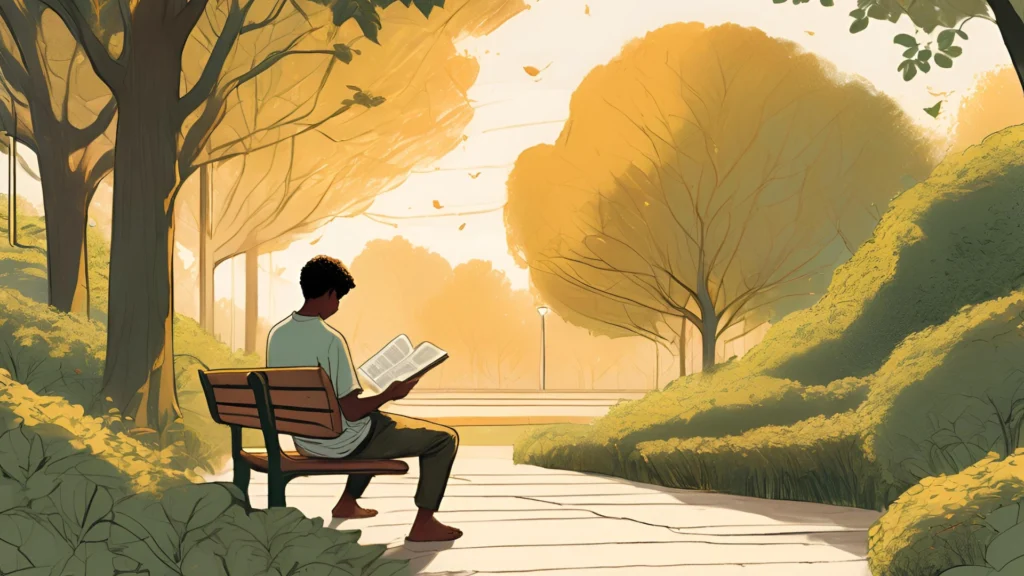Unlocking the Secrets to Lasting Happiness: A Comprehensive Summary of “The Art of Happiness” Book

Are you searching for the key to true and lasting happiness? Look no further! In his groundbreaking book, “The Art of Happiness,” renowned psychiatrist and spiritual leader, the Dalai Lama, joins forces with Western psychiatrist, Howard C. Cutler, to present a comprehensive guide to finding joy and fulfillment in life.
In this article, we’ll delve into the core teachings and principles discussed in “The Art of Happiness.” Whether you’ve read the book or are curious to learn more, this summary will provide valuable insights and actionable takeaways for a happier and more meaningful existence.
The Dalai Lama explores important topics such as love, compassion, self-acceptance, and forgiveness, offering practical advice and mindfulness exercises that can transform your perspective on life. His wisdom, combined with Cutler’s expertise, makes this book a powerful tool for personal growth and happiness.
Discover the secrets to unlocking lasting happiness and step into a life filled with purpose and contentment. Join us on this enlightening journey as we unpack the profound wisdom of “The Art of Happiness.”
Understanding the concept of happiness

Happiness is a universal human desire, yet its definition and attainment remain elusive for many. In “The Art of Happiness,” the Dalai Lama and Dr. Cutler delve deep into the nature of happiness, challenging the common misconceptions that often prevent us from achieving true and lasting fulfillment.
The Dalai Lama posits that happiness is not merely a fleeting emotion or a state of being that depends on external circumstances. Rather, it is a state of mind that can be cultivated and nurtured through conscious effort and a shift in perspective. He emphasizes that happiness is not something that can be purchased or attained through material possessions, but rather it is an inner state of being that arises from within.
The book encourages readers to move away from the pursuit of temporary pleasures and instead focus on the cultivation of inner peace, compassion, and a deeper sense of purpose. The Dalai Lama’s teachings suggest that true happiness is not about achieving a constant state of euphoria, but rather about finding a sense of contentment, resilience, and emotional balance in the face of life’s inevitable ups and downs.
The role of mindset in cultivating happiness

One of the central themes of “The Art of Happiness” is the importance of mindset in shaping our experiences and our ability to find happiness. The Dalai Lama emphasizes that our perception of the world and our circumstances plays a crucial role in determining our level of happiness and well-being.
The book explores the concept of “mental hygiene,” which involves cultivating a positive and constructive mindset. This includes practices such as reframing negative thoughts, challenging unhelpful beliefs, and developing a more compassionate and accepting attitude towards oneself and others. The Dalai Lama suggests that by training our minds to focus on the positive and to approach life’s challenges with resilience and equanimity, we can significantly enhance our overall sense of happiness and well-being.
Moreover, the Dalai Lama and Dr. Cutler discuss the power of mindfulness and present various meditation techniques that can help individuals become more present, aware, and in touch with their inner experiences. By cultivating a mindful and non-judgmental attitude towards our thoughts and emotions, we can learn to respond to life’s ups and downs with greater clarity, composure, and emotional balance.
The importance of self-acceptance and self-compassion

A fundamental aspect of the Dalai Lama’s teachings in “The Art of Happiness” is the importance of self-acceptance and self-compassion. The book emphasizes that true happiness cannot be found until we learn to embrace and accept ourselves fully, flaws and all.
The Dalai Lama encourages readers to let go of the unrealistic expectations and self-criticism that often hinder our ability to find happiness. He suggests that by cultivating a more compassionate and understanding attitude towards ourselves, we can break free from the cycle of self-judgment and self-doubt, and instead, focus on our strengths, talents, and inherent worth.
The book also explores the concept of self-compassion, which involves treating ourselves with the same kindness, care, and understanding that we would extend to a dear friend or loved one. By practicing self-compassion, we can learn to be more forgiving of our mistakes, more patient with our shortcomings, and more gentle in our self-talk. This shift in mindset can have a profound impact on our overall well-being and our ability to navigate life’s challenges with greater resilience and self-acceptance.
Building and maintaining positive relationships

Another key aspect of the Dalai Lama’s teachings in “The Art of Happiness” is the importance of cultivating and maintaining positive relationships. The book emphasizes that our connections with others are a crucial component of our overall happiness and well-being.
The Dalai Lama and Dr. Cutler discuss the importance of developing empathy, compassion, and effective communication skills in our relationships. They suggest that by cultivating a genuine interest in others, actively listening, and striving to understand their perspectives, we can deepen our connections and foster more meaningful and fulfilling relationships.
The book also explores the value of forgiveness and the ability to let go of resentment and anger towards those who have hurt us. The Dalai Lama explains that by embracing forgiveness, we can free ourselves from the burden of negative emotions and open the door to greater understanding, healing, and connection with others.
Finding purpose and meaning in life

A central theme in “The Art of Happiness” is the importance of finding a sense of purpose and meaning in life. The Dalai Lama and Dr. Cutler emphasize that true happiness and fulfillment cannot be achieved through the pursuit of material wealth, status, or external validation alone.
The book encourages readers to reflect on their values, passions, and the impact they wish to have on the world. By identifying our unique talents and strengths, and aligning our actions with a higher purpose, we can cultivate a deeper sense of meaning and fulfillment in our lives.
The Dalai Lama suggests that by engaging in activities that serve others and contribute to the greater good, we can experience a profound sense of joy and purpose. He also emphasizes the importance of finding balance in our lives, ensuring that we make time for self-care, personal growth, and the nurturing of our relationships and connections with others.
Practicing gratitude and mindfulness

A central pillar of the Dalai Lama’s teachings in “The Art of Happiness” is the practice of gratitude and mindfulness. The book highlights the transformative power of these practices in enhancing our overall well-being and happiness.
The Dalai Lama encourages readers to cultivate a deep sense of appreciation for the blessings and positive aspects of their lives, no matter how small or seemingly insignificant they may be. By focusing on what we have, rather than what we lack, we can shift our perspective and experience a greater sense of contentment and joy.
The book also delves into the practice of mindfulness, which involves being fully present and engaged in the current moment, without judgment or attachment. The Dalai Lama and Dr. Cutler present various mindfulness techniques, such as meditation and conscious breathing exercises, that can help individuals become more attuned to their thoughts, emotions, and physical sensations. By cultivating a mindful and non-reactive approach to life, we can develop greater emotional resilience, clarity, and the ability to navigate life’s challenges with greater ease and equanimity.
Overcoming obstacles and dealing with adversity

While “The Art of Happiness” emphasizes the importance of cultivating positive mindsets and practices, the Dalai Lama and Dr. Cutler also acknowledge the reality of life’s inevitable challenges and adversities. The book provides valuable insights and strategies for navigating difficult times and emerging stronger and more resilient.
The Dalai Lama emphasizes the importance of developing a balanced and realistic perspective when faced with hardship. He suggests that by acknowledging the impermanent nature of all things, we can learn to let go of attachment and find the courage to confront and overcome obstacles, rather than succumbing to despair or resignation.
The book also explores the concept of “mental flexibility,” which involves the ability to adapt and respond to change with grace and resilience. The Dalai Lama encourages readers to cultivate a mindset of openness, curiosity, and a willingness to learn and grow from their experiences, even in the face of adversity. By embracing a flexible and adaptable approach to life, we can develop the inner resources necessary to navigate the ups and downs of our journey with greater ease and equanimity.
Applying the principles of “The Art of Happiness” in daily life

Throughout “The Art of Happiness,” the Dalai Lama and Dr. Cutler provide practical, actionable steps that readers can take to integrate the book’s principles into their daily lives. The authors recognize that the path to lasting happiness is not a one-size-fits-all solution, but rather a personalized journey that requires consistent effort and a willingness to experiment and adapt.
The book offers a wide range of mindfulness exercises, self-reflection prompts, and practical strategies that readers can incorporate into their daily routines. From cultivating a gratitude practice to engaging in self-compassion exercises, the authors provide readers with the tools and guidance necessary to transform their mindsets and behaviors in pursuit of greater happiness and well-being.
The Dalai Lama and Dr. Cutler also emphasize the importance of patience and self-compassion in the process of implementing these principles. They acknowledge that change does not happen overnight and that setbacks and challenges are a natural part of the journey. By approaching the process with kindness, curiosity, and a willingness to learn, readers can gradually integrate the teachings of “The Art of Happiness” into their lives, leading to lasting and meaningful transformation.
Conclusion: Embracing lasting happiness

In “The Art of Happiness,” the Dalai Lama and Dr. Cutler have provided a comprehensive and insightful guide to unlocking the secrets to lasting happiness. Through their combined wisdom and expertise, they have presented a compelling and accessible framework for cultivating inner peace, compassion, and a deeper sense of purpose in life.
The book’s core message is that true happiness is not a destination, but rather a journey of self-discovery, personal growth, and the cultivation of positive mindsets and practices. By embracing the principles of mindfulness, self-acceptance, gratitude, and resilience, readers can embark on a transformative path towards a more fulfilling and joyful existence.
As we conclude our exploration of “The Art of Happiness,” we are left with a profound sense of hope and inspiration. The Dalai Lama’s teachings remind us that happiness is not something that can be purchased or attained through external means, but rather it is an inherent quality that we all possess within ourselves. By embracing these principles and integrating them into our daily lives, we can unlock the secrets to lasting happiness and live a life filled with purpose, contentment, and a deep sense of connection to ourselves and the world around us.